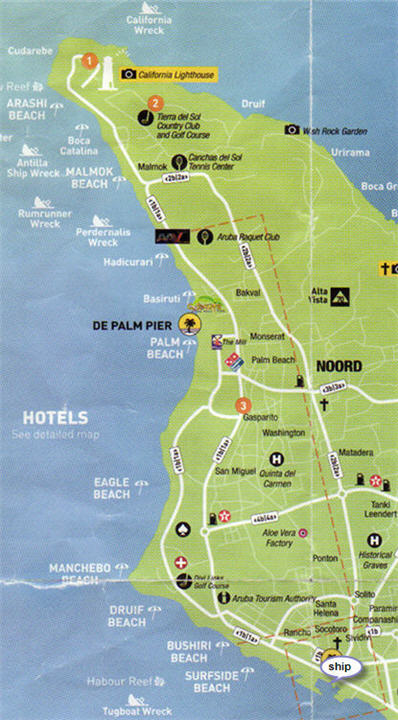Farms Work Wonders is a non-profit umbrella organization with a vision to create an agrarian focused community based around a sustainable, organic farm that elevates local food as an economic driver. To financially sustain the project long-term, our goal is to launch connected income-producing social enterprises (market, bakery, restaurant, production kitchen) which also serve as living classrooms providing unique opportunities to gain real-life experience for local Appalachian youth. Watches & Wonders spin-off events began in Hong Kong in 2013, then one of the most important markets for luxury watches. 'When the region was hard hit in 2016 by a decrease in business and the.
by Connor Fisher
The Market Wonders begins, begins again, and reinvents, continually readjusting itself. The book, the third by poet Susan Briante, takes as its object the titular economic structure, and demonstrates a series of engagements—political, biographical, conceptual—with the contemporary capitalist market. Briante's innovative engagement includes a sequence of personifications that imagine the Market's own life structure and daily routine. Through the book's sections, the market emerges as a complex intellectual and material figure, constantly in numerical and temporal motion: Briante indicates the ever-shifting closing value of the DOW on the top margin of the page in two long sections—e.g., 'July 2—The Dow Closes Down 9686' (45). The text begins with a foundational group of quotations and invocations: Briante draws from John Ashbery, Lyn Hejinian, Charles Olson, Brenda Hillman, and Bernadette Mayer. Mingled with this literary constellation, Briante adds two other quotations:
The theoretical physicist says, ‘I've always wanted to find the rules that governed everything.
The theoretical physicist says, Deep laws emerge (5).
Through the collective gathering of its sections, The Market Wonders Pamper online casino. poses similar epistemological questions: although the market behaves in a variety of (often contradictory) ways and inhabits multiple social registers simultaneously, Briante's collection probes into its varying natures, to examine what underlies the market, what motivates it, what grounds it?
The answer emerges through poetics as much as through economics. Many of Briante's pages dexterously mix registers of speech, types of language, and challenge the margins of the page itself to hold headnotes and footnoted text, compounded by long lines or abrupt jumps of syntax within the main 'poem' sections. A strong example occurs on page 16 (I have omitted the Dow closing data and the footnoted text):
What if I write it all down, track it, if I consult tickers
and windows, measure blood flow, monitor the rise and fall
of my accounts, the tarnish of leaves
will a veil tear, will a web sparkle dew-strung, a rope bridge
between the dead-living-unborn?
Can I feel these numbers in my hands

like Whitman at the rail of a ferry?
The Dow rises above 10,000.
My dog scratches his ear.
A lamp buzzes on its time. Rains
clear and the cold

like Whitman at the rail of a ferry?
The Dow rises above 10,000.
My dog scratches his ear.
A lamp buzzes on its time. Rains
clear and the cold
arrives. The unborn
keep their distance.
I make a dinner of brown rice, butternut squash and kale:
some [thing/event] or my 3000
nerves bristling in the air.
Rock Market Glen Rock
The implications of Briante's use of the page and of a complex poetics manifests themselves over the course of the book: the market is not relegated to a specific layer of our lives (the financial, the economic), but pervades every aspect of daily existence. The food on the dinner table is complexly related to the market—in both its most abstract and most concrete definitions. The market, and its concerns (what could be termed the 'market-functions') are often surprisingly material. As shown in the quoted page, Briante makes this refreshing turn and often sidelines ephemeral conceptions of the market as a placeless, groundless entity. Not only does the function of the market pervade objects and implicitly alter the 'windows … bloodflow … leaves … veil … dew … rope bridge … dog … ear … lamp … unborn' of the quoted passage, but it also is, in some measure, constituted by them. Material is complicit in market, and serves to ground it; to make the market physically, poetically, and affectively real. Other helpful descriptions of the materials-of-the-market occur on page 44, as Briante invokes 'the names of 62 birds,' as well as 'bluegreen dragonflies [and] tomatoes,' and on page 67, where she states that 'dark matter thinks.'
The aspect of materiality furthers the book's inquiry into the idea of grounding the market: a base that provides stability to the market's often unpredictable or senseless actions. Briante's poems initially parallel the theoretical physicist's search for 'deep laws'—in aspects related to the economy, Marxist labor economies, and personal life. The Market Wonders asks itself and its readers what motivates and drives the market—barring that, it asks, in a phrase borrowed from philosophy, if the market is in fact market 'all the way down.' In a telling passage late in the book, Briante asks:
An invisible calculus exists
beyond the page, a second story
leaf tremble, that view exactly
with the powerline running through (80)
The interspersed language of science bears significance; it does not indicate objectivity, but rather a sincere epistemological search.
Market Fresh Foods
Briante materializes this concern with the underlying, the hidden causal mechanism, by including, at the bottom of the page, a ticker tape homage: two lines of subscripted text run along the bottom of the page in most of the book's ten sections. The ticker tape meanders in a wonderful ramble which allows Briante to stretch her poem format into page-spanning long lines—although here, as in the book's numerous prose sections, Briante emphasizes the unit of the sentence over the unit of the line. She writes, 'A pattern imposes form on cloth … behind a screen, brand on a body, current routed, stitched across countries: 42 months 1,260 days, 2 olive trees, 2 lampstands, .27 of US households live in ‘asset poverty' ' without savings to cover 3 months of expenses (61–62). In these subscripted passages, Briante suggests that numbers, as a quantifiable, substantially firm means of qualitative knowledge, underlie the market structure and are in some aspect causal; numbers provide sequence, create data, and allow the discourse to branch from the historical to the imaginatively biographical. But the stability of numbers becomes false and misleading, as Briante acknowledges; if numerical stability is the 'ground' of The Market Wonders, it would seem that this ground needs its own grounding. While numbers provide 'everything patterns' ('12 stars, 7 heads, 10 horns, 7 crowns … 3.5 days, .1 of the city, 7,000 people, 2nd woe, 3rd woe' [63]), at some level these patterns break down and fail to account for the workings of capitalism, of the market, of personal relationships and one's children. For Briante, the ground has always been ungrounded.
The Market Wonders catalogs a personal and cultural crisis of economic knowledge. For Briante, the breakdown between the 'political' and the 'personal'—already an unwieldy division—has dissolved. Whatever would formerly have been relegated to either category is now, outside of categorization, in the space influenced by, and influencing, the market. The last section of The Market Wonders, titled 'Mother is Marxist,' adds further complexity to Briante's argument by considering ways in which her radical responsibility as a mother forces engagement and sometimes complicity with the market. The personal and political collide in the home: home of the market and home of our children. 'Mothers attempt to erase the integers, to move decimals, to point out discrepancies in the ledger, disrupt the protocols of exchange' (98). Here, couched again in the language of numbers and mathematical function, Briante places herself and a collection of radical mothers working in tandem to disrupt the market's overpowering function. The mother is hyper-aware of her political and socio-economic status, military growth and deployment, racial incarceration, and the history of children's insurance. While these issues do not ground the market itself, they allow Briante to display the incisive—and often introspective—perception that does ground many parts of this collection.
Briante writes on page 8, 'The poem and the stock market welcome speculation.' Any speculation (including The Market Wonders' clear grasp of history) is impossible without imagination. And it is this same imagination which allows the market—which finally exists as an infinitely constituted network, ungrounded or self-grounding—to continue the influence and expansion so well challenged and documented in Briante's work.
Ahsahta (2016): $18
Connor Fisher lives in Athens, Georgia. He has a MA in English Literature from the University of Denver, an MFA in Creative Writing from the University of Colorado at Boulder, and is working towards a PhD in English and Creative Writing at the University of Georgia.
By Julie Cline
January 6, 2017
Susan Briante, author, poet and associate professor of creative writing and literature at the University of Arizona, will lecture on 'The Market Wonders: On the Impossibility of (Personal) Accounting' at Washington and Lee University on Jan. 24, 2017, at 5 p.m. in the Hillel House Multipurpose Room. The talk is free and open to the public.
Her lecture is part of the year-long series on Markets and Morals and is sponsored by W&L's Roger Mudd Center for Ethics. For more information about this series, see: https://www.wlu.edu/mudd-center/programs-and-events/2016-2017-markets-and-morals.
The Market Wonders App
Briante will read from 'The Market Wonders,' a lyric investigation into the stock market, and talk about its writing as a response to the 2008 financial crisis. She will also discuss the ways in which poetry offers models for understanding lived experience under neoliberalism as well as for tracking possibilities of individual complicity and resistance.
'The Market Wonders' was a finalist for the National Poetry Series, and the Kenyon Review calls it 'masterful at every turn.' Briante is also the author of the poetry collections 'Utopia Minus' (2011) and 'Pioneers in the Study of Motion' (2007).
Briante has received grants and awards from the Atlantic Monthly, the MacDowell Colony, the Academy of American Poets, the Dorothy Sargent Rosenberg Memorial Fund and the U.S.-Mexico Fund for Culture. New work has been published in Gulf Coast, Black Warrior Review, Guernicaand The Progressive.
Her research and teaching interests include poetry and poetics, cross-genre writing, experimental autobiography, documentary studies, affect theory and translation.

